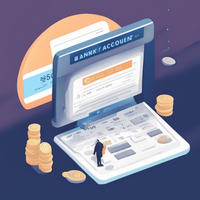Neobanks

Neobanks, also known as challenger banks or mobile-only banks, represent a new wave of financial institutions that operate solely online. These digital-native entities have gained significant traction in recent years and are set to reshape the future landscape of banking. Below, we explore some key trends expected to shape the evolution of neobanks.
1. Digital Transformation
Neobanks are at the forefront of digital transformation within the banking industry. They leverage cutting-edge technology and innovative user interfaces to provide seamless and intuitive digital experiences for their customers. This includes features such as instant account setup, real-time transaction tracking, AI-driven personalization, and 24/7 customer support through chatbots.
2. Enhanced Customer Experience
One of the primary advantages neobanks offer is an enhanced customer experience compared to traditional brick-and-mortar banks. By eliminating physical branches and legacy systems, neobanks can focus on delivering personalized services tailored to individual customers' needs. They achieve this by leveraging data analytics and machine learning algorithms to gain insights into user behavior and preferences.
3. Global Expansion
While many neobanks have initially launched in specific regions or countries, there is a growing trend towards global expansion among these institutions. With advancements in regulatory frameworks enabling easy cross-border operations, neobanks can now scale their services internationally without requiring extensive physical infrastructure.
4. Collaborations with Traditional Banks
In order to expand their service offerings and tap into established customer bases quickly, some neobanks are partnering with traditional banks rather than directly competing against them. This collaboration allows traditional banks to benefit from the agility and innovation offered by neobanks while giving neobanks access to existing banking infrastructures.
5. Financial Inclusion
With their low-cost structures and simplified account opening processes, neobanks have the potential to play a transformative role in driving financial inclusion. By catering to underserved or unbanked populations, neobanks can offer basic banking services and affordable financial products, such as microloans and savings accounts, to individuals who were previously excluded from traditional banking systems.
6. Expansion into Additional Financial Services
As neobanks establish themselves in the market, we are witnessing a trend towards expanding their offerings beyond basic banking services. This includes providing investment services like robo-advisory platforms, insurance products, foreign exchange solutions, peer-to-peer lending platforms, and more. The objective is to become comprehensive digital financial hubs that cater to all aspects of their customers' financial needs.
7. Integration with Fintech Ecosystems
Neobanks are actively collaborating with fintech startups and integrating their services into their own platforms. By partnering with specialized fintech firms that excel in areas such as payments processing or fraud prevention, neobanks can tap into industry-leading expertise without having to build everything from scratch internally.
8. Focus on Security and Compliance
As technology advances rapidly in the banking sector, maintaining robust security measures against cyber threats becomes crucial for both customer trust and regulatory compliance. Neobanks invest heavily in cutting-edge security systems and comply with strict data protection regulations to ensure the safety of customer information.
In summary, the future trends of neobanks revolve around digital transformation initiatives aimed at enhancing customer experience through personalized offerings while expanding globally through partnerships with traditional banks. Additionally, these institutions are likely to play an instrumental role in driving financial inclusion by providing affordable access to basic banking services for underserved populations while diversifying their product portfolios through collaborations within the wider fintech ecosystem.
Sponsored
Sponsored
Sponsored
Explore More:

Market Risk
Risk management in banking is a critical aspect of the banking industry. Managing...

Credit Risk
Risk management in banking is a critical aspect of the banking industry. Managing...

Risk Management in Banking
Risk management in banking is a critical aspect of the banking industry. Managing...

Glass-Steagall Act
The Glass-Steagall Act, also known as the Banking Act of 1933, was an...

Dodd-Frank Act
The Dodd-Frank Act, officially known as the Dodd-Frank Wall Street Reform and Consumer...

Basel Accords
Banking regulations refer to the laws, rules, and guidelines imposed by regulatory authorities...

Banking Regulations
Banking regulations refer to the laws, rules, and guidelines imposed by regulatory authorities...

Cash Flow Statement
The cash flow statement is an important financial statement for banks as it...

Income Statement
The income statement is an essential component of a bank's financial statements. It...

Balance Sheet
The balance sheet is one of the most important financial statements used by...

Bank Financial Statements
Bank financial statements provide a comprehensive overview of a bank's financial performance and...

Online and Mobile Banking
In today's rapidly evolving technology landscape, the banking industry has undergone a significant...

Credit Cards
Credit cards are one of the most prominent banking products offered by financial...

Understanding Different Types of Bank Loans: Features and Benefits for Personal and Business Financing
Loans are a core offering of banking institutions, providing individuals and businesses with...

Checking Accounts
A checking account is one of the most common banking products used by...

Saving Accounts
Introduction In the world of banking, saving accounts are one of the most...